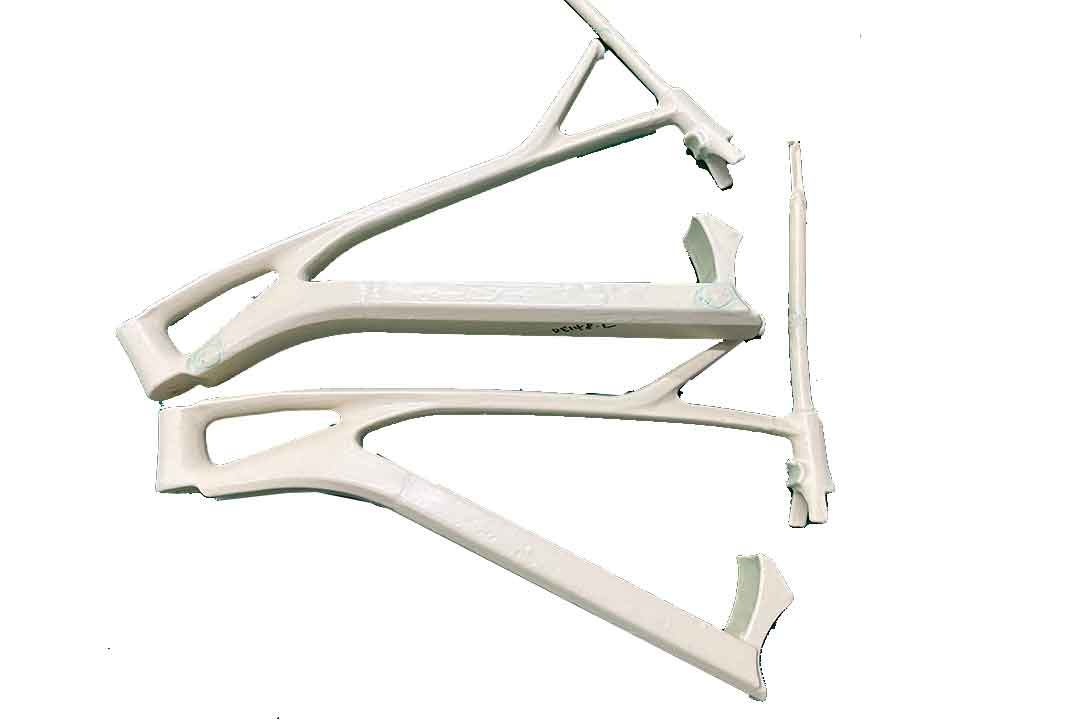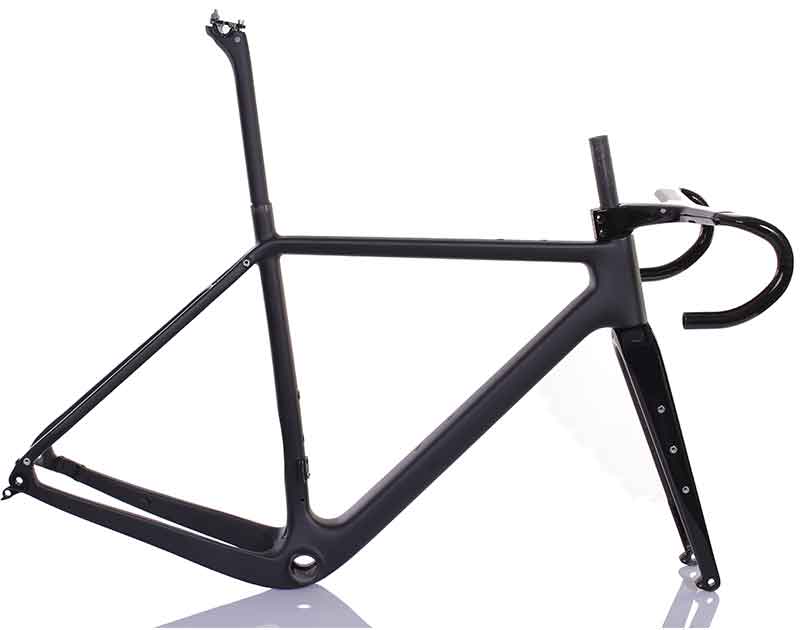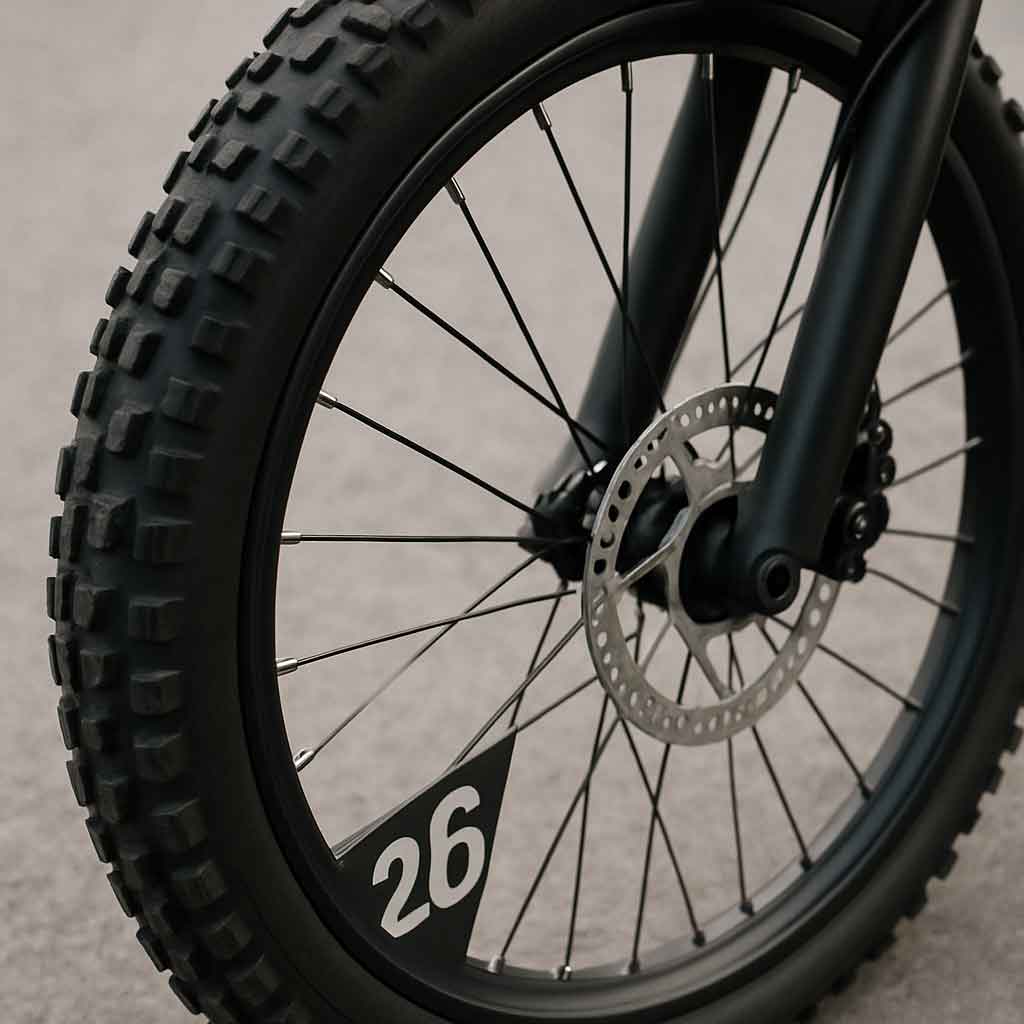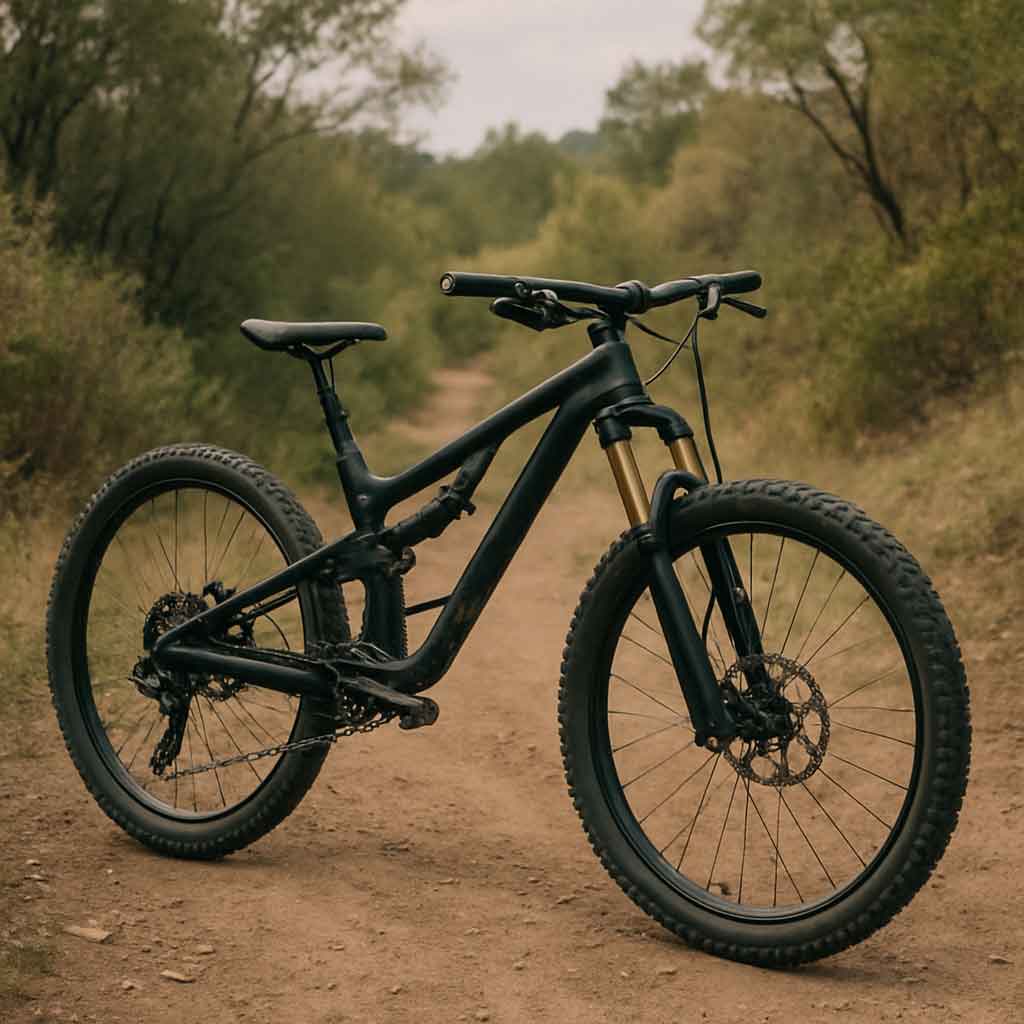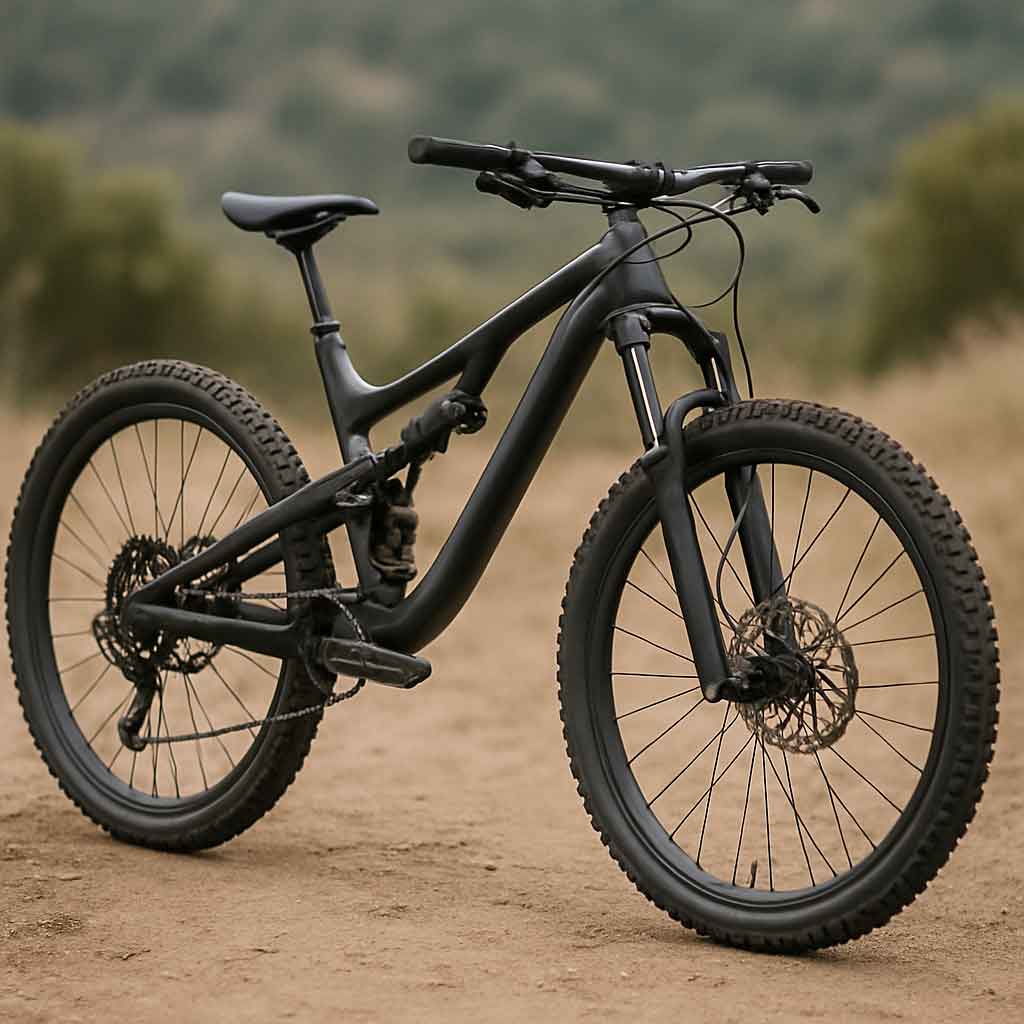Welcome to Mondince Bike - A well-known factory specialized in produce carbon bike frame and other parts since 2007.
How to Choose the Right Bike Size
Understanding the intricacies of bike sizing can seem daunting at first, but with a little guidance, the process becomes much simpler. The right bike size not only ensures comfort but also enhances your control and efficiency while cycling. It's important to realize that bike sizing isn't just about numbers; it's about how those numbers translate to real-world riding and how they fit with your individual body structure and cycling goals.
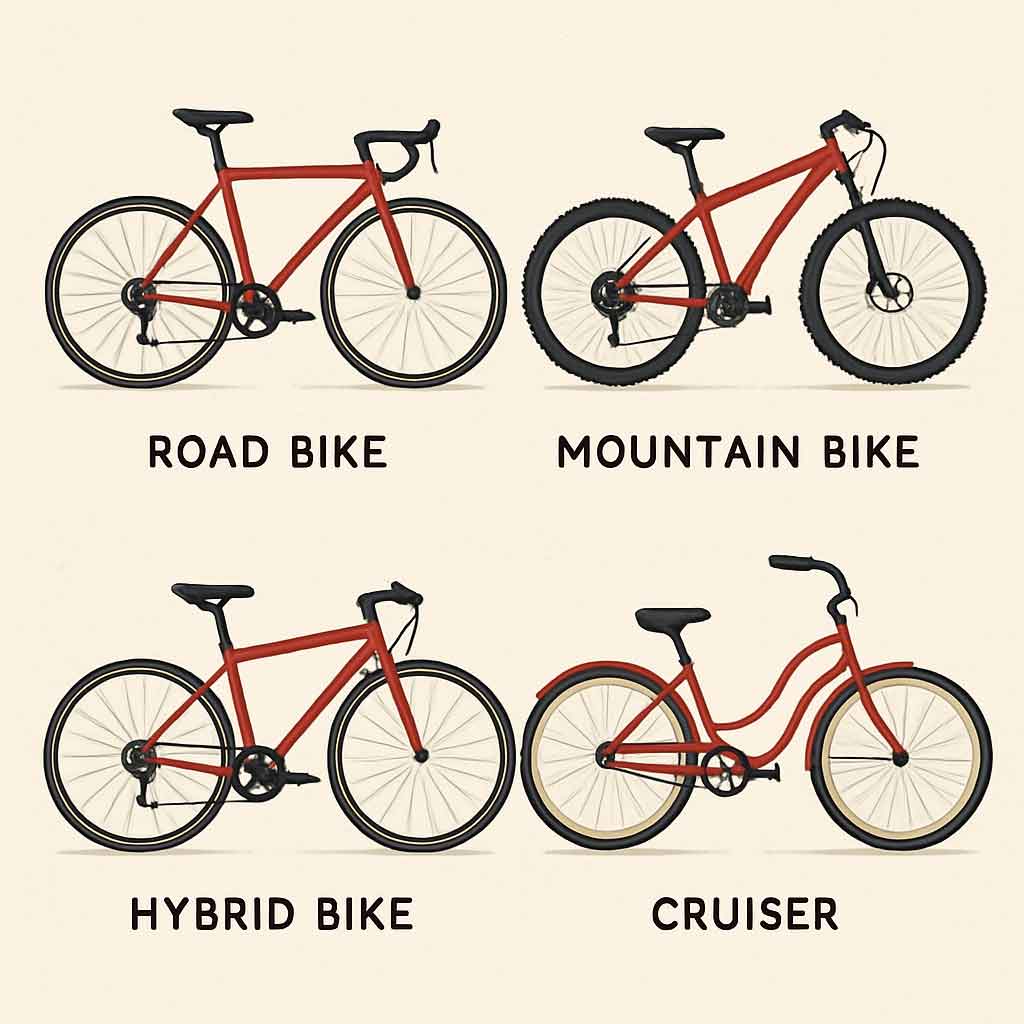
Understanding Bike Size
Bike size is primarily determined by the frame size, which is the core structure of the bike. The frame size is usually measured in inches or centimeters and corresponds to the length of the seat tube. However, different types of bikes, such as road bikes, mountain bikes, and hybrids, may have different sizing standards. Understanding these differences is essential to ensure you're getting a bike that fits well with your intended use and personal preferences.
While the frame size provides a baseline, other factors such as the bike's geometry, the length of the top tube, and the position of the handlebars can also influence the fit and feel of a bike. Manufacturers often use these variables to tailor bikes to specific riding styles, meaning the same frame size can feel different across various brands and models. Therefore, it’s important to look beyond just the frame size when determining the right bike for you.
Frame Size Importance
The frame size affects how well you can handle the bike and how comfortable you will be during your ride. A bike that's too big can be difficult to control, while a bike that's too small can cause discomfort and inefficiency. Riding a bike that's incorrectly sized can lead to poor posture, increased fatigue, and even potential injuries over time.
To find the right frame size, you need to consider your height and inseam length. The inseam is the distance from the floor to your crotch, and it's a vital measurement for determining the correct bike size. Additionally, your riding style and the type of terrain you plan to tackle should also influence your decision. A proper fit ensures that your body weight is distributed correctly, which is crucial for maintaining balance and control.
Using a Bicycle Size Chart
A bicycle size chart is a helpful tool that provides a general guideline for selecting the appropriate bike size based on your height and inseam. These charts are designed to simplify the process by offering a range of sizes that typically accommodate specific body measurements. However, it's important to remember that these charts serve as a starting point and not as a definitive answer.
How to Use a Bicycle Size Chart
- Measure Your Height and Inseam: Stand with your back against a wall and your feet flat on the floor. Use a tape measure to determine your height and inseam length. Accurate measurements are crucial as even a small difference can lead to selecting the wrong size.
- Refer to the Size Chart: Use a bicycle size chart that matches the type of bike you're interested in. Most charts will list sizes in inches or centimeters along with corresponding height and inseam ranges. Be sure to check multiple charts from different manufacturers, as sizing can vary slightly between brands.
- Choose the Right Size: Find the size that matches your measurements. If you fall between two sizes, consider how you plan to use the bike. For example, if you prefer a more aggressive riding position, choose the smaller size. If you prioritize comfort, go for the larger size. Take into account any personal preferences or physical conditions that might influence your choice.
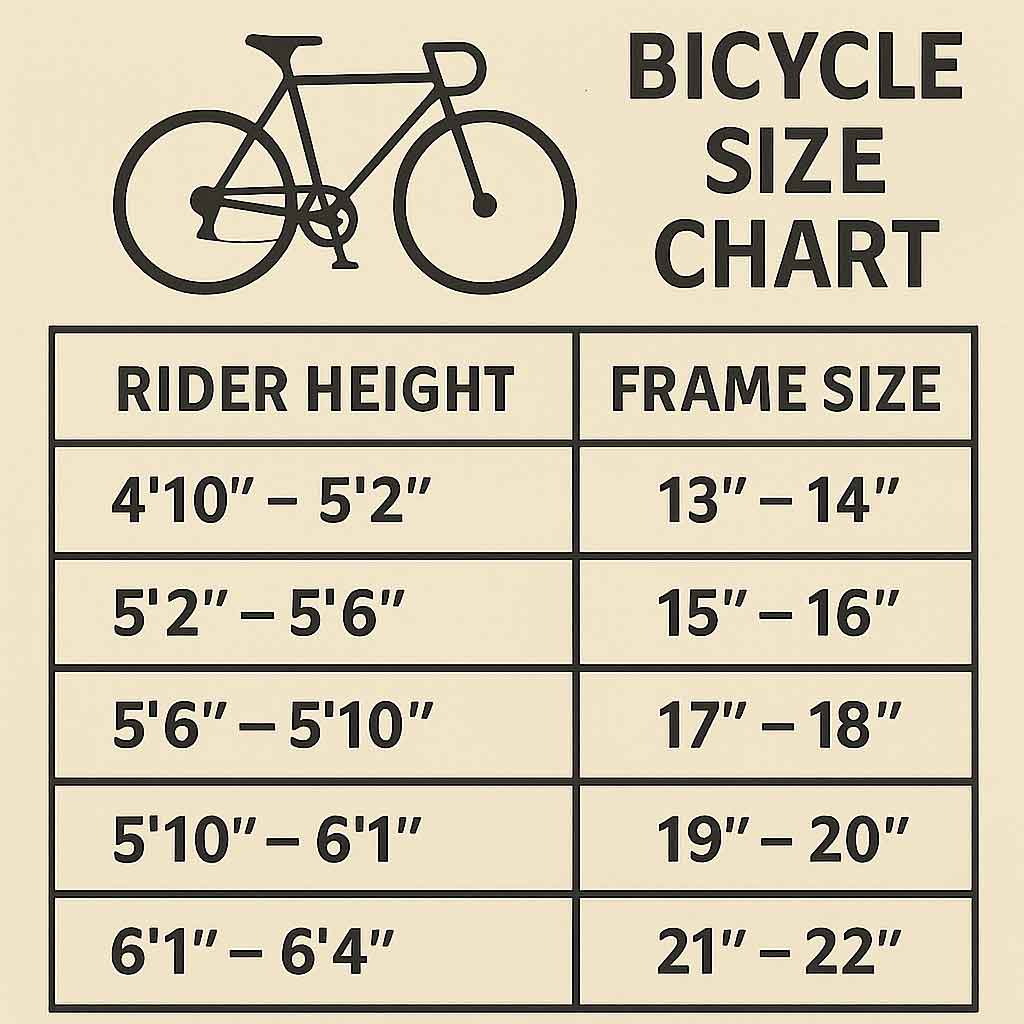
Consider Your Riding Style
Your riding style also plays a significant role in determining the ideal bike size. Different types of bikes are designed to accommodate various styles of riding, so it's important to choose a size that complements how you intend to use the bike. Here are some considerations:
Road Bikes
Road bikes are designed for speed and long-distance riding on paved surfaces. They typically have a more aggressive geometry, which means the rider is positioned lower and more forward. This position requires a precise fit, so it's crucial to follow the size chart closely. A proper fit ensures that you can maintain an aerodynamic position without straining your muscles.
The handling of a road bike is highly sensitive to size, as a misfit can lead to discomfort during long rides or at high speeds. When selecting a road bike, pay attention to the reach and drop of the handlebars, as these will affect your riding posture and efficiency. A test ride can be particularly beneficial for road bikes to ensure that the geometry suits your riding style.
Mountain Bikes
Mountain bikes are built for off-road trails and rough terrain. They often have a more relaxed geometry, allowing for a more upright riding position. Mountain bikes may offer more flexibility in sizing, so you might have some leeway in choosing between sizes. This flexibility is particularly useful for riders who plan to tackle a variety of trails and conditions.
When choosing a mountain bike, consider the type of terrain you’ll be riding on. A larger frame may provide more stability on downhill sections, while a smaller frame can offer better maneuverability on tight, technical trails. The suspension setup and tire size can also influence how a mountain bike feels, so consider these elements when making your decision.
Hybrid Bikes
Hybrid bikes combine features from road and mountain bikes, making them versatile for various terrains. The sizing for hybrids can be more forgiving, and comfort is usually a higher priority. These bikes are ideal for commuters or recreational riders who want a balance between speed and comfort.
When sizing a hybrid bike, focus on comfort and versatility. Ensure that the bike allows for an upright riding position and that the frame size accommodates any accessories you might want to add. Since hybrids are often used in diverse environments, it's important to choose a size that feels comfortable across different conditions.
Test Ride Before You Buy
While charts and measurements provide a good starting point, there's no substitute for a test ride. Visiting a local bike shop allows you to try different sizes and styles to see what feels best. A test ride gives you the opportunity to experience how a bike handles in real-world conditions and whether it meets your expectations for comfort and performance.
What to Look for During a Test Ride
- Comfort: Ensure that you can comfortably reach the handlebars and pedals. Your knees should be slightly bent at the bottom of the pedal stroke, and you should be able to touch the ground with your toes while seated. Comfort is key to enjoying your rides and avoiding strain or injury.
- Control: The bike should feel stable and easy to maneuver. You should be able to steer confidently and maintain balance without straining. A bike that feels natural to control is likely the right size for you.
- Adjustability: Check if the seat and handlebars can be adjusted to suit your preferences. Some bikes offer more adjustability than others, which can be beneficial if you're between sizes. Adjustability allows you to fine-tune the fit to perfectly match your body and riding style.

by Benson Low (https://unsplash.com/@ckbenson)
Additional Tips for Choosing the Right Bike Size
- Consult with Experts: If you're unsure about your measurements or sizing, consult with experts at a bike shop. They can provide personalized advice based on your specific needs and riding style. Professional insight can help you avoid common pitfalls and ensure you make a well-informed decision.
- Consider Future Needs: Think about how your cycling habits might change over time. If you plan to ride more frequently or tackle different terrains, choose a size that accommodates potential future needs. A bike is an investment, and selecting a versatile size can extend its usefulness.
- Don't Forget Accessories: Remember to factor in space for accessories like a helmet, lights, or a water bottle holder when considering size. Additional gear can affect the overall weight and balance of the bike, so ensure that the frame size you choose can accommodate these extras without compromising comfort or performance.
Conclusion
Choosing the right bike size is essential for a comfortable and enjoyable cycling experience. By understanding frame size, using a bicycle size chart, and considering your riding style, you can find the perfect fit. Always test ride before buying and consult with experts if needed. With the right size, you'll be ready to hit the road or trail with confidence. Whether you're embarking on daily commutes or weekend adventures, a well-sized bike ensures that every ride is a pleasure.
Happy cycling!



